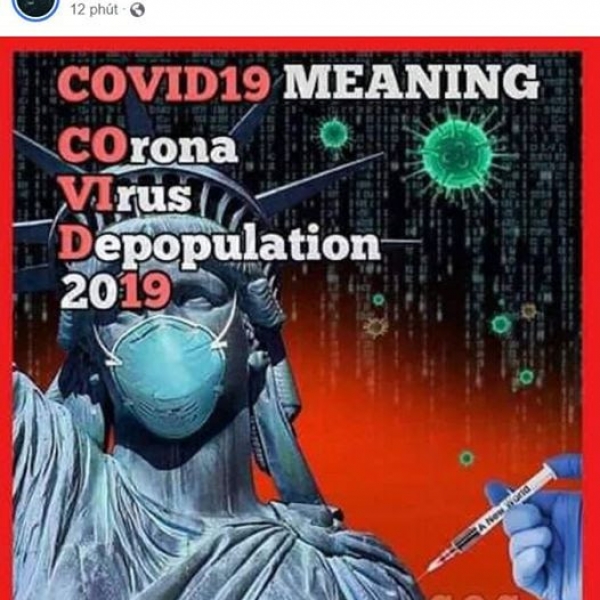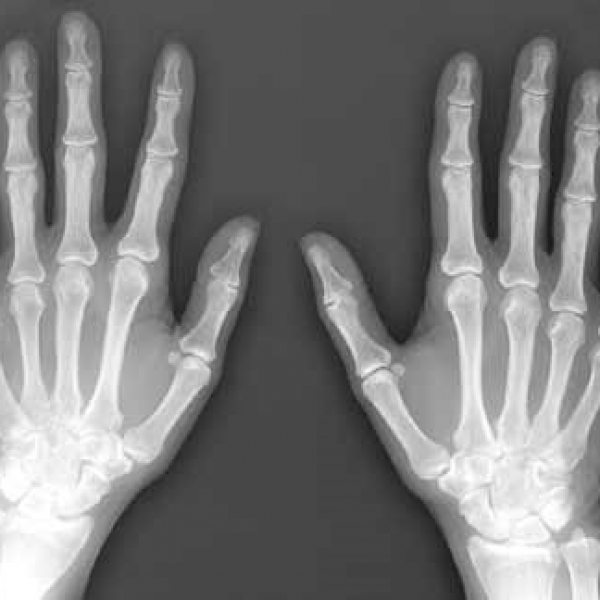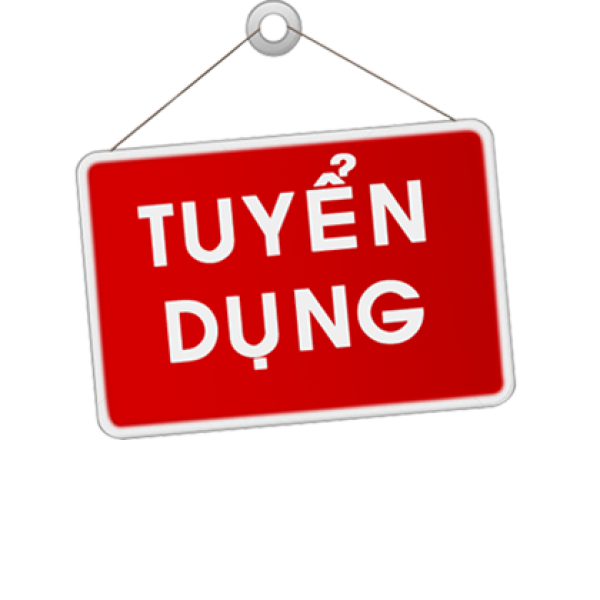Contact Admission
Symbol of medicine

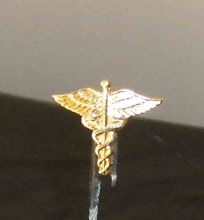
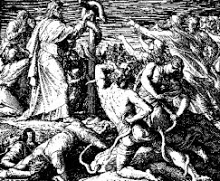
The image of a snake wrapped around a stick has long been considered a symbol of the Y profession. However, there was a time when a picture of two snakes wrapped around a stick and near the tip of the stick there were also horizontal wings considered as a symbol for the medical profession.
Currently, the symbol of a snake wrapped around a stick is an official symbol of the Y branch. The figure of two snakes wrapped around a stick with wings is often used as a symbol for organizations and related products. medical industry.
This short article discusses the origins and differences between the two symbols and the reasons why the use of these two symbols is confusing.
According to legend, the medical symbol in the shape of a snake wrapped around a stick is related to the Greek god Asclepios (Asclepius or Aesculapius), the god of medicine.
Organizations targeting careers and patients around the world including the World Health Organization have used the traditional medical sign "Asclepius's stick" as a sign. The original Asclepius had a serpent wrapped around a grainy, meandering stick.
Asclepius's cane (Asklepios)
According to legend, Asclepius was a Greek physician who practiced around 1200 BC, and is seen as the god of medicine, often depicted as a bearded man, wearing a bra, with his left hand holding a stick with a sacred serpent wrapped around represents a youthful rebirth like a molting snake. Gradually through myths and legends, Asclepius was worshiped as the Greek god Asclepius specialized in healing.
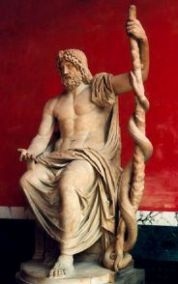
Medical school in ancient Greece associated with temples called Asclepions (Asclepieia) to commemorate Asclepius. Asclepion centers became important in Greek society. Patients believe that they can recover if they sleep at these temples. The patient often visits, gives gifts, sacrifices to the god, and is cared for and cured by the priests of that temple (Asclepiadae). Asclepius's devotion spread as far as Rome and continued into the sixth century.
The Asclepiadae monks are the healers who are in charge of these sacred therapeutic places, and are passed down by hereditary. The harmless Aesculapius snakes were kept in Asclepieia healing centers built by Ancient Greece and then Rome to take the name of the god. These snakes are found in southern Europe, parts of Germany, Austria, where the Romans ruled. The snake in the temple may have escaped and multiplied.
This snake is named Elaphe longissima, family Colubridae, soft smooth skin, slender body, brown back, darker streaks behind the eyes, white scaly ivory belly that can be easily attached to the hardening surfaces. can crawl on trees. This is a snake native to the Asia Minor, and some of the Middle East is probably brought home by the Romans because of their healing properties.
Snakes, related to the science of poison and death, have the same metaphysical concept.
And snakes have long been seen as a symbol of Medicine, the profession of Medicine, and toxicology.
According to ancient beliefs, snakes can heal or heal wounds when touched. Snakes are also involved in pharmacodynamics, and disinfection, because snakes contain anti-venom properties to protect against their own venom. Also according to legend, the snake also refers to the transformation between the world of the metaphysical dead and the mortal because the snake crawls on the ground and can bring death. The snake's ability to peel the skin represents the circulation of life and rejuvenate the body.
In Medicine, the symbol of the snake wrapped around a stick and in the Medicine industry the snake symbol wrapped around a medicine cup, has been known through ancient records in the Mediterranean regions such as Greece or Egypt.
As a symbol of modern Medicine, the toxicology industry, the snake wrapped around a stick beside a pot of medicinal herbs symbolizing Medicine and poison.
The original Hippocrates oath begins with the sentence: "I swear, before the medical god Apollo and beside Asclepius and Hygeia and Panacea and all the gods ...".
According to the writing the scholar wrote this oath not according to the Hippocrates school of medicine, but perhaps by the Pythagoras school or followers.
The name Asclepios has also been used to give a subfamily in the herb branch. Milkweed of the genus Asclepias, and the herb asclepias tuberosa (pleurisy roots). In addition, asclepias syriaca gives flowers and latex as a suspension (sap). Asclepias syriaca belongs to the order Gentianales, family Apocynaceae, family Asclepiaoideae
In addition to the healing symbol in the medical profession, the stick of Asclepius (the stick of Asclepios, Asculapius, or Askepian) is an ancient Greek symbol related to astronomy, the Asclepius representing Ophiuchus, also known as Ophiuchus serpentarium. the thirteenth symbol of astronomy (sidereal zodiac).
Regarding the origin of the story of the walking stick and the snake, there are many different explanations. The symbol is named after a Greek legend, though the stick and serpent may have been recited much longer than before.
Greek mythology:
According to Greek mythology, Asclepius, the god of healing, was the son of Apollo and the goddess Coronis. When she was pregnant with Asclepius, Coronis secretly had a lover on earth. When Apollo discovered, Apollo sent Artemis to kill Coronis. After Coronis died, Apollo saved the fetus still living in Coronis' womb and raised Asclepius. Asclepius learned medicine from the horse-bodied (centaur) god Chiron. Asclepius healed very well and once saved the life of a patient who was presumed dead.
Asclepius has been reported to once revive Hippolytus after Hippolytus was dragged to death by his horse after being frightened by a bison. Only when Asclepius was about to resurrect the famous hunter Orion after Orion was accidentally shot with an arrow by his lover, the lord Hades could not be patient. Hades complained to Zeus that fewer and fewer people went to the Underworld, and that Hades Pluto's reputation could decline. Hades pointed out that only god could be immortal, now if Asclepius was allowed to resurrect the dead, then humans would also become immortal.
Zeus agrees with Hades, feeling that the gods' immortality might be threatened, so he orders to kill Asclepius with a thunderstorm. Apollo was furious when he learned that Asclepius was beaten to death by thunder. After a while, Zeus admired Asclepius's talent and placed Asclepius in the constellation in the sky, named Ophiuchus (Snake-Bearer God).
(Please note that mythology should only be considered as mythology, to avoid criticizing scientists, astronomers with serious research and scientific basis).
Asclepius has three daughters named Meditrina, Hygeia and Panacea representing Medicine, the science of health, and omnipotence (all of which means healing), and two sons named Machaon and Podalirius, both the two sons were both physicians in the Greek army (it is written in Homer's Iliad).
Note that the old Hippocrates Oath wrote "... the medical oath of Apollo, Aesculapius, Hygeia, and Panacea ..."
In ancient Christian times, the constellation Ophiuchus (Snake Nebula) is mentioned in reference to Saint Paul holding the Maltese Viper.
There is also a Greek legend that Podalirius, son of Asclepius, fought alongside the Achaeans in the battle of the Trojan, and cured Philoctetes with the famous snake bite that Philoctetes had endured for ten. year.
Theory "Worms"
Some scholars have written that this symbol represents a worm wrapped around a stick, which is a worm parasite named only Dracunculus medinensis. This worm is also known as "fierce snake", "dragon of Medina", "test worm". This is a parasitic worm commonly found in ancient times, it is hidden under the skin, and is treated by doctors by cutting the skin where the worms are hidden. When the worm crawled out of the cut, the doctor took it out by rolling it slowly around a stick until the worm was completely wrapped. It is thought that the physician at the time might have advertised their service with a sign with a worm wrapped around a stick. The Middle Ages mistakenly thought this worm was a snake and has since depicted the image as a snake wrapped around a stick.
Biblical Origin
The symbol of the bronze serpent named Nehushtan is mentioned in the Bible. In the Book of Numbers (21: 6) of the Bible it is written that the Israelites complained to Moses and the Lord of their desperate situation (Why did you bring us ... to die in wild? For there is no food and water…. ”(21: 5) In addition to Greek mythological origin, and folk origin, there is biblical origin.
This complaint made God angry and sent a ferocious snake to attack the Jews. So many people died so that the Jews had to run to Moses and ask God to forgive them. The Lord calmed down, and sent Moses to make a stick surrounded by a bronze snake. Those who have been bitten by a snake just looking at this stick are naturally cured. Maybe it is for this same reason that Nehushtan influenced the Asclepius and later used as a symbol of medicine and medicine.
Figure 1: In 1508, under the sponsorship of Pope Julius II, Michelangelo Buonarroti painted on the ceiling of the Sistine Chapel a scene of a snake disaster with the Jews and the formation of a bronze snake.
Figure 2: The second picture shows Moses holding a stick with a copper snake, treating the Jews to bite the snake.
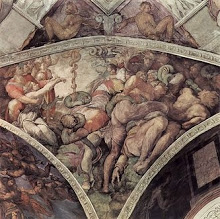
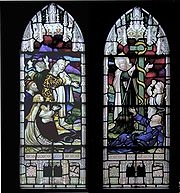
Figure 1 Figure 2
The stick is like a symbol for medicine
From the beginning of the 16th century, Hermes's Asclepius and caduceus were used as markers of printers, especially printing books for pharmacopoeia in the 17th and 18th centuries. Asclepius's cane and serpent appear as a separate symbol for the branch of medicine.
Although Asclepius 'cane is considered to represent medicine and cures, the sign of Hermes' messenger stick (caduceus) with a stick and two snakes wrapped around under horizontal wings is seen as the symbol. medicine is more common in the United States. Many people have used the word caduceus with meaningful allusion to both symbols.
Career applications
The snake and stick figure of Asclepius is used as a symbol for many organs related to the Y branch. Some are as follows:
Star of Life medical emergency services
American Medical Association
American Veterinary Medical Association
American Osteopathic Association
Australian Medical Association
Bristish Royal Army Medical Association
American Hippocratic Registry
World Health Organization
Australian Veterinary Association
Malaysian Medical Council
MediAlert
Some symbols in the world:

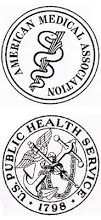

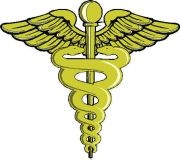
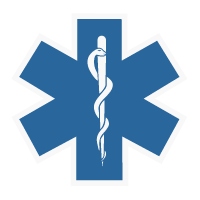

As already mentioned, in addition to Asclepius's symbol of the snake and the stick, sometimes a brand has two snakes curled a stick, and the sides with wings are also used as symbols of medicine or medicine. The symbol with two snakes rolled up on a winged stick is commonly known as a Caduceus. The Greek word Caduceus means "The messenger wand".
The US Military Medical Service has used this symbol since 1856 as its own symbol, different from the official symbol of the medical profession from earlier with a snake rolled on a stick.
This confusion occurred for a long time, and more recently, the brand Caduceus was also used by several agencies as a symbol after the US Military Medicine officially used this symbol.
The confusion of symbols representing the medical profession occurred as early as the 19th century (1956). In 1902 the sign was added to the uniform of the Military Medical circles. The inconsistent medical sign was noticed by the librarian to the competent authorities, but the sign remained unchanged.
In 1901, the French military medical profession was named La Caducée. Then in 1902, the sign of caduceus was officially used by the US Military Medical Service. After World War I, the caduceus mark was considered the mark of the Department of Military Medicine and the Navy Hospital Corps. The American Medical Association also used the caduceus mark for some time, but in 1912 it was discarded and the Asclepius stick was used instead.
Contributing to this confusion is that some book printers have used the caduceus imprint on many medical books as a printer's mark, and this has caused many to misunderstand it as the mark for medicine.
A little bit of statistics
In 1992, a survey by Walter J. Friedlander investigating the use of medical markers in the United States reported that 62% of occupations involved in medicine using Asclepius a stick and a snake, and 76% of nests. Commercial organizations use the caduceus mark.
Friedlander observed 242 signs or badges of American medical and medical organizations or agencies that used the Asclepius caduceus or stick from the 1970s to the 1980s. The author found that professional associations used the Asclepius more often (62%), while commercial establishments used the caduceus more often (76%).
The exception is in hospitals, only 37% use Asclepius sticks compared to 63% use caduceus signs (perhaps because hospitals in the United States are often welfare businesses).
The author Friedlander also argues that while the commercial presence of caduceus may be regarded as more or less appropriate, the professional association that understands the meaning of the two signs should honor the Asclepius canes, while commercial organizations place more emphasis on the eye-catching appearance of their advertising products (the caduceus looks beautiful, balanced, and familiar) should use caduceus.
Learn more about Mercury's (Roman) Caduceus and Hermes (Greek) Karykeion

Many medical organizations use the symbol of a short stick wrapped by two caduceus, and on top of which a pair of wings are spread out at the sides. This symbol is actually a symbol of the wand of the Greek god Hermes (or the Roman god Mercury), a messenger of god, a magician creator, a manipulator of death, and protector. for merchants and thieves.
The original caduceus comes from the Greek word karykeion (meaning messenger stick), which itself is based on the word eruko meaning restraint, ending.
The use of caduceus by commercial organizations such as drug manufacturers and the military (United States) has misinterpreted caduceus as a symbol of medicine.
The Caduceus of Hermes

Think also need to talk about the god Hermes and the stick with a pair of snakes wrapped around.
The Greek god Hermes is also known as Thoh in Egypt, Taaut of the Phoenix people, and God Mercury of Rome. All temples share a common trait related to the magic stick and snake pair.
The original legend of a magic stick with a pair of snakes is depicted in the story "The breasts of Tiresias", the story of the prophet Tiresias Poulenc seeing two snakes in intercourse so using a magic stick in the middle to divide split snake in half. Soon after, Tiresias was instantly transformed into a woman for seven years at school. The transformative power in this story is strong enough to complete the reversal of even the male and female physical bipolarity, from the fusion of two snakes, to the stick. Tiresias's cane with the snake pair was then passed on to Hermes.
The Mystical Relation of the Hermes Staff: A mysterious description of Hermes' stick is that the pair of snakes can represent the yin-yang energy of the Kundalini sect when this energy (the coiled serpent located at the base of the spine) changes from rotating frames like bicycle wheels (chakras) and around the spine (stick) to the head is where information accesses wisdom to the soul through the powerful wings of Hermes.
The power stick above is often found in many witchcraft shops depicting a stick as a penis symbolizing a man's potential, wrapped tightly around by two mating snakes.
The reason the caduceus is used as a medical symbol.
According to one article, the connection between Hermes, Hermes's staff and Medicine is considered to be derived from the connection between Hermes and alchemy. In the late 16th century, in addition to medicine and pharmacy, alchemy's research included chemistry, ore, and alchemy.
Modern Medical Signs: Why one snake is more than two snakes
For those interested in medical history, the article in The Annals April 15, 2003 by Robert A. Wilcox and Emma M. Whitman (vol. 138 Issue 8 / p. 673-677) is worth reading. The summary of the article is as follows.
Today the two snake pattern is often used to represent medical practice and profession. Worldwide, the most common symbol in medicine is a snake wrapped around a stick of Asklepios (Latin: Aesculapius), a Greek-Roman medical god. However, in the United States, Asklepios's cane with a snake and the symbol of two snakes wrapped around the stick above the tip of the stick with open bird wings (the caduceus sign) are both commonly used as symbols for medicine. The two-snakes sign commonly referred to as the "medical messenger" is similar to the ancient caduceus sign with the stick of the Greek-Roman god Hermes (Latin, Mercury). Many physicians will be surprised to learn that the origin of caduceus is quite new. The invention of this mark was based not on the stick of Hermes, but on the mark of the printer of a famous 19th century medical book publisher. In addition, this new mark only became popularized after being officially used by the United States Military Medical Organization in the early 20th century.
In the article, the Greek words are translated into English with the most similar writing style to Greek. Hence the words Asklepios, Hygieia, Hippokrates, and Epidavros were used instead of Asclepius, Hygeia, Hippocrates, and Epidaurus.
More about Snakes
* In Egyptian history, the snake played an important role with the cobra of the Nile adorning the pharaoh's crown in ancient times. Snakes are worshiped as a god and are also used for malicious purposes such as killing opponents or ritual suicide (Cleopatra).
* In Greek mythology, snakes are often linked to deadly and dangerous antagonism. Snakes are also considered symbols attached to the earth. Lerna's nine-headed snake-like monster Hydra is the king's keeper. Hydra was later killed by Heracles (Hercules) with the second of the 12 acts of Hercules. In addition to Hydra, there is also Medusa. Medusa, whose hair is all solid, is a female monster that turns men into stone when seen by Medusa. Medusa was killed by Perseus, cutting her head off as described in the myth.
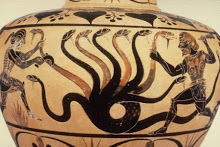
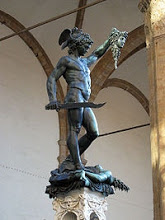
Hercules and the 9-headed Hydra snake Perseus beheaded Medusa
*
India is often referred to as the land of snakes. Snakes are worshiped like gods. Currently there are still images of Indian women pouring milk into solid bottles. Cobra is seen on the muzzle in the picture of Shiva and Vishnu sleeping on a 7-headed snake with the snake curled up. Many radio stations in India only worship cobra, dubbed Nagraj. They believe that snakes bring wealth. Every year there is also an Indian-Indian holiday called Nag Panchami in honor of snakes.
* In Christianity and Judaism, the serpent was first recognized as the impetus to seduce Adam with the forbidden fruit of the Tree of Knowledge. Snakes return to the Bible through the Nehushtan story as written above. And finally the snake is also the symbol of Satan in the New Testament.
The word Ouroboros (Greek) or Oroboros is an ancient symbol depicting a snake swallowing its own tail and forming a circle. This circle represents human life and rebirth, leading to immortality.
* Snake is the sixth largest animal in 12 years representing a zodiac in the lunar calendar.
Conclude:
Snakes are probably one of the many mysterious creatures that are reminded of a lot in historical literature. The symbol of Medicine with the snake wrapped around the stick is derived from Asclepius or some other origin, as the medicine cup with a snake symbolizing the pharmacy is a topic of interest to the author of these words. Articles with many missing details, were written for the sole purpose of sharing with readers.
Documents collected online are the main source. Please note the omission of authoring images or materials is beyond the writer's wishes.
Source SVQY
Materials used collect:
- Emerson, John (July 2003). Eradicating Guinea worm disease: Caduceus caption.http://www.backspace.com/notes/2003/07/27/x.html.
- Engle, Bernice S., “The Use of Mercury’s Caduceus as a Medical Emblem”, The Classical Journal Vol 25, No. 3 December 1929:204-208.
- Friedlander, Walter J (1992). The Golden Wand of Medicine: A History of the Caduceus symbol in medicine.Greenwood Press. ISBN 0-313-28023-1.
- Garrison, Fielding H. , “The use of the caduceus in the insignia of the Army medical officer,” Bulletin of the Medical Library Association 9 (1919-20:13-16).
- Jayne, W.A., The Healing Gods of Ancient Civilization, Yale University Press, 1925, pp 331-34; Berdoe E., Origin and Growth of the Healing Art, London, Sonnenschein, 1893, p150, footnote)
- Tyson, Stuart L., “The Caduceus”, The Scientific Monthly, Vol. 34, No. 6, June 1932: 492-498
- Wilcox, Robert A; Whitham, Emma M (15 April 2003). “The symbol of modern medicine: why one snake is more than two”. Ann Intern Med. 2003;138:673-677.
http://en.wikipedia.org/wiki/Rod_of_Asclepius
http://en.wikipedia.org/wiki/Dracunculiasis
http://en.wikipedia.org/wiki/Nehushtan
http://www.annals.org/cgi/content/abstract/138/8/673.
http://www.perseus.tufts.edu/Herakles/hydra.html
http://en.wikipedia.org/wiki/Medusa
Trinh Nguyen Dam Giang
Source: https://vietnamnet.vn/vn/khoa-hoc/tai-sao-ran-la-bieu-tuong-nganh-y-108844.html
Other news
- Therapeutic potential and mechanisms of mesenchymal stem cell-derived exosomes as bioactive materials in tendon–bone healing ( 08:38 - 23/11/2023 )
- Symbol of medicine ( 19:38 - 19/09/2021 )
- The history of the development of medicine worldwide and in Vietnam ( 18:58 - 19/09/2021 )
- Pharmacology in mind ( 08:42 - 04/02/2021 )
- Nitric Oxide and other medical contributions over 2 decades ( 08:19 - 11/12/2020 )
- Scientists Create First Full-Size 3D Printed Human Heart Model ( 09:32 - 10/12/2020 )
- How Many People Need Vaccines to Reach Herd Immunity? ( 09:25 - 10/12/2020 )
- Whitmore's disease increased in Central ( 07:56 - 19/11/2020 )
- Diabetes - the silent killer ( 08:17 - 16/11/2020 )
- Lung cancer may be mistaken for COVID-19 ( 08:30 - 21/10/2020 )







